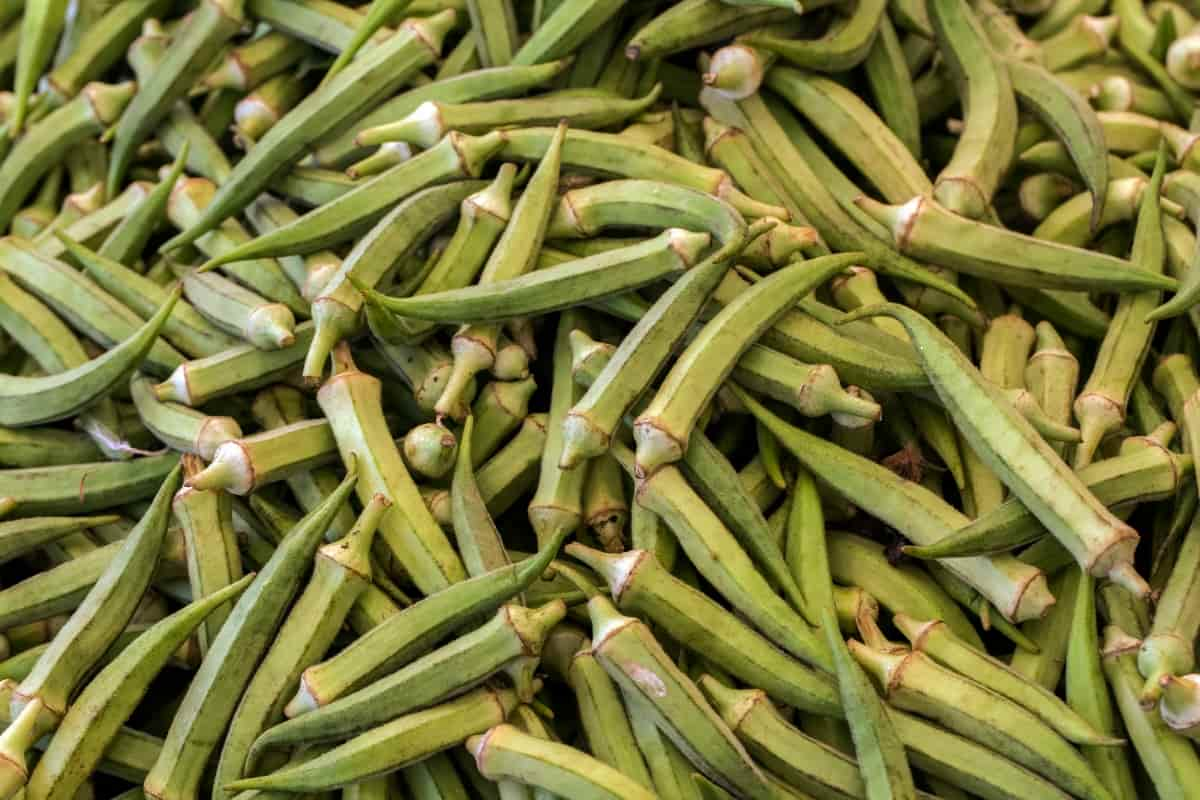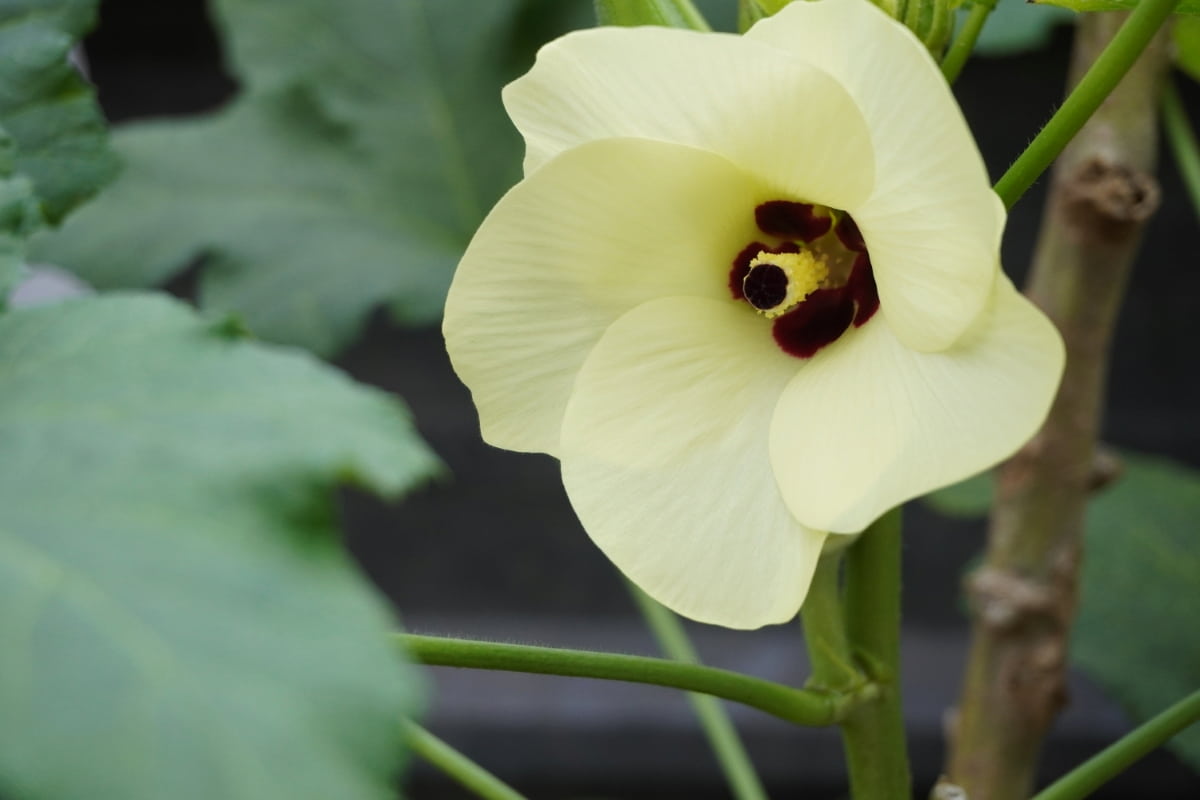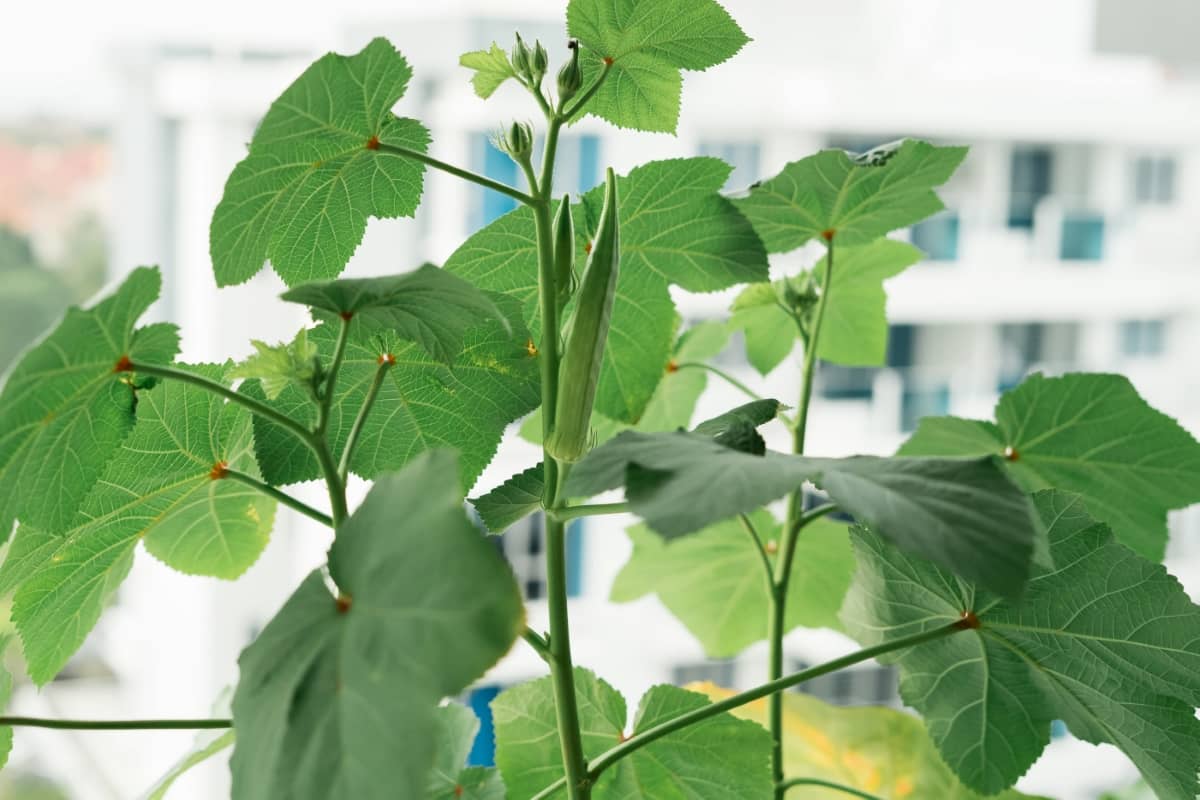The Okra Root-Knot Nematode is a pesky little critter that can wreak havoc on your precious Okra plants. Controlling Okra Root-Knot Nematodes naturally is not only better for the environment but also safer for you and your family. By utilizing natural treatments and organic methods, you can effectively manage these nematodes without resorting to harmful chemicals.

How to Control Okra Root-Knot Nematode Naturally
Okra Root-Knot Nematode Causes, Symptoms, and Impact on Plant Health
These tiny creatures invade the roots of your Okra plant and cause the formation of small galls or knots. As for symptoms, you’ll notice stunted growth in your Okra plants. This nematode infestation also weakens the root system, making it more susceptible to other diseases and pests. The impact on plant health is significant. As these nematodes multiply and continue their feeding frenzy on your beloved Okra plants’ roots, nutrient uptake becomes compromised. This leads to poor yields and an overall decline in crop productivity.
Identifying the Okra Root-Knot Nematode Infestation: Signs and Symptoms
Detecting an infestation of Okra Root-Knot Nematodes early on is crucial in preventing further damage to your plants. These microscopic pests can wreak havoc on your Okra crop, leading to stunted growth, yield loss, and overall poor plant health. The sign of an Okra Root-Knot Nematode infestation is the presence of small galls or knots on the roots.
These swellings are caused by the nematodes feeding and reproducing inside the root tissue. Additionally, infected plants may exhibit yellowing leaves that eventually wilt and die. It’s essential to confirm nematode presence through laboratory testing or consulting with a local extension office.
Crop Rotation Strategies to Control Okra Root-Knot Nematode Naturally
Crop rotation is a method for managing Okra Root-Knot Nematode infestations naturally. By strategically rotating crops in your garden, you can disrupt the nematodes’ life cycle and reduce their population. The key is to avoid planting susceptible plants, such as Okra, in the same area year after year.
In case you missed it: How to Control Okra Thrips Naturally: How to Get Rid of Them with Natural and Organic Treatment

To implement crop rotation effectively, it’s important to have a plan in place. Rotate these different groups of plants annually so that no plant family occupies the same space for more than one growing season. Additionally, consider incorporating cover crops into your rotation strategy.
Beneficial Nematodes as Biological Control Agents for Okra Root-Knot Nematode
These microscopic organisms are not harmful to plants or humans but can be a game-changer in controlling the nematode population. Beneficial nematodes work by attacking and parasitizing the larvae and adults of root-knot nematodes. They penetrate these pests and release bacteria that kill them from within.
This natural strategy helps reduce the number of damaging nematodes in your garden, allowing your Okra plants to thrive without being attacked. To apply beneficial nematodes, mix them with water according to package instructions and drench the soil around your Okra plants. It’s best to do this during periods when soil temperatures are between 10-30°C for optimal effectiveness.
Enhancing Soil Health to Suppress Okra Root-Knot Nematode Population
The effective way to naturally control the population of Okra Root-Knot Nematodes is by enhancing the health of your soil. Healthy soil creates an environment that is unfavorable for these destructive pests, helping to suppress their population and minimize damage to your Okra plants. Maintaining proper soil pH levels is crucial. Nematodes thrive in acidic soils, so it’s important to test and adjust the pH, if necessary, regularly.
Adding organic matter can help raise the pH and improve overall soil fertility. Promoting biodiversity in your garden can also play a significant role in reducing nematode populations. Additionally, practicing crop rotation is essential. Avoid planting Okra or other susceptible crops in the same location year after year. Instead, rotate with non-host plants like beans or corn to disrupt the life cycle of nematodes and prevent them from building up in the soil.
Trap Crops to Reduce Okra Root-Knot Nematode Infestation in the Garden
Choose trap crops that are highly susceptible to nematodes but do not host the same species as Okra. Some common options include marigolds, sunflowers, and mustard greens. By planting these trap crops strategically around your garden, you create a tempting alternative for the nematodes.
As the pests feed on the roots of these decoy plants, they become trapped within their root systems. After a few weeks of growth, remove the entire trap crop along with its roots – this ensures that any trapped nematodes are also removed from your garden. Be sure to dispose of this material properly to prevent further spread of infestation.
Organic Soil Amendments to Manage Okra Root-Knot Nematode Naturally
The popular organic amendment is compost. Composting kitchen scraps and other organic matter creates a nutrient-rich soil conditioner that helps suppress nematode populations. Another beneficial amendment is aged manure. Manure contains valuable nutrients and beneficial microbes that can help combat nematodes naturally.
Adding organic matter such as straw, hay, or cover crops like clover can also help suppress Okra Root-Knot Nematodes by improving soil structure and increasing biodiversity in the soil ecosystem. In addition to these amendments, incorporating biochar into your garden beds can provide long-lasting benefits for managing nematodes naturally.
Neem Oil as a Natural Treatment for Controlling Okra Root-Knot Nematode
This organic solution acts as a powerful deterrent against these microscopic pests that can wreak havoc on your Okra plants. The key to using neem oil successfully is early detection and regular application. As soon as you notice signs of nematode infestation, such as stunted growth or galls on the roots, it’s time to take action.
In case you missed it: How to Control Okra Spider Mites Naturally: How to Get Rid of Them with Natural and Organic Treatment

Dilute the neem oil according to package instructions and apply it directly to the soil around your Okra plants. Remember to reapply neem oil every few weeks throughout the growing season for maximum effectiveness. With consistent use, you’ll see a significant reduction in nematode damage and an improvement in your Okra harvest.
Solarization Techniques to Eliminate Okra Root-Knot Nematode Infestation
This method involves using the sun’s heat to kill off these pesky pests and reduce their population in the soil. To start, prepare your garden bed by removing any weeds or debris. Then, moisten the soil thoroughly before covering it with a clear plastic sheet. Make sure the plastic is tightly secured around the edges to create a greenhouse-like effect.
The sun’s rays will penetrate through the plastic and heat the soil underneath, reaching temperatures that are lethal for nematodes. Ideally, you want temperatures between 43-52°C for effective nematode control. If necessary, adjust ventilation by lifting one corner of the plastic slightly. Remember that solarization works best in areas with high solar radiation and during warmer seasons.
Companion Planting Strategies for Natural Control of Okra Root-Knot Nematode
Marigolds, for example, are known for their strong scent that repels nematodes. By interplanting marigolds with your Okra crops, you create a natural barrier that helps protect against nematode infestations. Another effective companion plant is basil. Its aromatic oils not only enhance the flavor of other nearby herbs and vegetables but also work as a natural repellent against nematodes. Planting basil near your Okra plants can ward off these harmful pests and keep them at bay.
Frequently Asked Questions (FAQ) on Control of Okra Root-Knot Nematode
Can I Prevent Root-Knot Nematode Infestation?
Prevention is always better than cure. To reduce the risk of nematode infestation in your Okra garden, follow these preventive measures: practice crop rotation by avoiding planting susceptible crops in the same area for consecutive seasons, use certified disease-free seeds or transplants, and improve soil health through organic matter amendments.
What are Root-Knot Nematodes?
Root-knot nematodes in Okra are microscopic worms that feed on plant roots and live in the soil, causing knots or galls to form.
How Do I Know If My Okra Plants Have Root-Knot Nematodes?
Look for stunted growth, yellowing leaves, and swollen or knotted roots. These symptoms indicate a possible infestation.
In case you missed it: How to Control Okra Whiteflies Naturally: How to Get Rid of Them with Natural and Organic Treatment

Conclusion
To promote a healthy garden ecosystem and naturally suppress Okra Root-Knot Nematode populations, focus on enhancing soil health. Controlling the Okra Root-Knot Nematode naturally offers many benefits for both your plants and the environment. By opting for natural methods, you can avoid using harmful chemicals that can have adverse effects on the ecosystem. Effective control of the Okra Root-Knot Nematode is crucial for maintaining the Okra plant’s health and productivity.
- Beneficial Insects in Pest Management
- Natural Solutions for Pest Control in Flower Gardens
- Types of Fungicides Used in Agriculture
- Common Issues in the Fruit Development Stage of Pomegranate Farming
- Fruit Development Issues in Papaya: Easy Solutions and Treatment
- Soil-Borne Diseases and How to Protect Your Plants
- Practices to Prevent Disease Spread in the Garden
- From Wilted to Thriving: How to Treat Root Rot Naturally in Houseplants
- Natural Remedies to Cure Brown Spots on Fig Tree Leaves